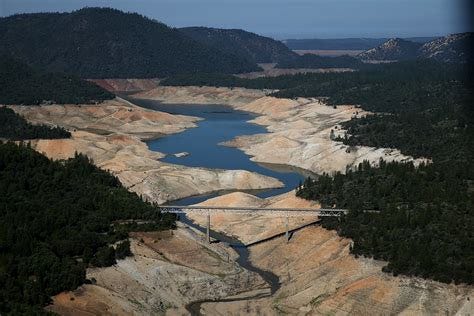Water scarcity: a growing problem throughout the world
Scientists have determined several water starved hotspots around the globe
Water scarcity, the inability of a city or region to meet its basic water needs, is becoming an ever greater problem. According to the United Nations, over two billion people live in countries without adequate water supplies, and two to three billion, experience severe water scarcity for at least one month of the year. A recent study places that figure even higher, at four out of five individuals on the planet experiencing such scarcity for at least one month annually. The world’s urban population is projected to face ever greater water scarcity, doubling from 930 million in 2016 to between 1.7 and 2.4 billion by 2050. And, of course, poorer populations suffer most severely.
A study published in April of last year identifies 21 global water scarcity “hotspots,” in which a serious “water gap” exists between water demand and availability. A research team from Utrecht University analyzed data to determine the drivers of water scarcity at each spot. Population growth, agriculture, and changes due to global heating were the largest factors affecting both the quality and quantity of available water. The study was published in the scientific journal Environmental Research Letters. The hotspots span the globe, from Spain to the Arabian Peninsula; from Chile, to Thailand.
Most of our the world’s water use goes to agriculture, responsible for 72 percent of all water withdrawal; industry uses 12 percent; and 16 percent is used by municipalities and homes. Climate change makes things worse as warming temperatures diminish the Earth’s capacity to store water in soil and ice. Global heating also makes weather across the world more extreme—more floods and more and longer droughts—rendering water availability more unpredictable.
The United States
In the U.S., water scarcity is largely a problem of the western states. With the Colorado River experiencing years of drought, Lake Mead and Lake Powell have dropped to historic lows in recent years. And a recent study conducted by researchers from the University of New Mexico, Utah State University, Arizona State University, and the University of Colorado found that continued overdrawing of the Colorado’s waters combined with continued dry years could cause Lake Powell, and even Lake Mead, to lose their capacity to serve as viable reservoirs as soon as next summer.
Under the Great Plains, stretching from South Dakota to Texas, lies the Ogalalla Aquifer, which supplies drinking water and water for agriculture. The region above the aquifer produces 20 percent of the country’s wheat, corn, and cotton. Starting in the 1950s and 1960s, farmers began relying on the Ogalalla Aquifer to irrigate their crops during drought, causing the water level of the Ogalalla to drop by 15 feet on average.
Most of the wells were drilled in the 1960s, and new wells have continued to be drilled. Major drought hit the Great Plains from 2010 to 2015. During this time, 352 wells were drilled in the Oklahoma Panhandle, in Texas, Cimarron, and Beaver counties. The level of the aquifer declined by more than 13 feet in Texas County, 9 feet in Cimarron County, and 4 feet in Beaver County during this period.
Africa
Cape Town, South Africa, has experienced a water crisis for years. Starting in 2015, reservoir levels there started to decrease. The crisis peaked from 2017 to 2018, when reservoir levels dropped as low as 14 percent of capacity.
Although the drought conditions have lessened, and many have said the crisis abated back in 2020, a new report from South Africa’s Department of Water and Sanitation surmises that the area around Pretoria, known as Gauteng, and the Western Cape will experience water crisis because of in-migration population growth in those areas. The report projects that Guateng’s population will rise from about 16 million to 20 million, while another half-million residents will be added to Western Cape’s population of eight million.
Water rationing in the Johannesburg area, which left many residents without water supplies for weeks, had residents taking to the streets in protest. The protests led to road closures, and some protesters clashed with police.
Because of water shortages Morocco has recently implemented drinking water rationing. To address this problem, the North African country plans on constructing water-related infrastructure, as well as desalination factories and facilities to recycle wastewater.
Asia
At a recent event titled “Building Water-Sensitive Communities: Collaborative Solutions for Freshwater Sustainability,” the Senior Director of the World Wildlife Fund’s Freshwater Program, Dr. Masood Arshad, called out Pakistan and that country’s over-extraction of groundwater, saying that this has led to the degradation of key ecosystems of the Indus River, Keenjhar Lake, and the Ravi River. “Water scarcity is no longer a future concern but a crisis we are living through,” he said. The event marked the launch of a five-year World Wildlife Fund-Pakistan project.
Earlier this year, in Rawalpindi, a district south of Islamabad, residents expressed fears of further water shortages, which are worsened by the area’s mushrooming population. The crisis has created a black market for water, with individuals and municipalities paying exorbitant rates to the “tanker mafia” or “water mafia” for potable water.
Pakistani farmers have also protested, saying they lack irrigation water for their crops. They experience this water shortage despite the Indus recently reaching flood levels. In the Khairpur District, adjacent to the Indus, farmers demonstrated their plight by sitting on the completely dried-up floor of a waterway. They allege that corruption and incompetence among irrigation officials are causing a man-made agricultural drought in their region. The chairman of the separatist party Jeay Sindh Mahaz, Riaz Ali Chandio, blamed the government, saying it had created the crisis to compel farmers to sell their farms to large agribusinesses.
Kazakhstan is expected to have only enough water to provide for 50 percent of its needs by 2040. The government mostly plans on building more reservoirs to address this looming problem.
Mexico
Reservoirs that supply Mexico City with water recently hit historic lows, due to ongoing drought conditions. In March of last year, the city’s Cutzamala water system dropped to 38 percent capacity.
More than half of the city’s water comes from over-exploited aquifers. The problems started in the 16th century. “When the Spaniards arrived on the continent, they drained the lakes on which the city was built,” says Caroline Houck, an editor with The New York Times. “And so all of the impervious surfaces that have been built on top of those don’t really allow for the rainwater that does fall to replenish the aquifers.”
Incompetence, poor construction, and maintenance are drivers of this crisis, as 40 percent of Mexico City’s water is lost from leaks. People steal water, too. Organized criminals steal from the public water system for agriculture, or they resell it back to the municipality at inflated rates.
Europe
Water scarcity is often thought of as a problem of the global south, but it is a growing problem in Europe as well. According to the Europe Environment Agency, 34 percent of the EU experienced water scarcity during at least one season during 2022. The problem is more acute in southern Europe. Around 30 percent of the residents of these countries are under permanent water stress and up to 70 percent experience seasonal stress during Europe’s summer.
I hope you appreciated this post. Like other posts of The Green Dispatch, I try to give a concise description of an environmental issue, bringing in some of the latest science and news.
I consider these posts important and that my readers will learn something from them. (I certainly learn a lot by putting them together!) Unfortunately, the Substack algorithms have not been working in my favor for the last few months, and readership of The Green Dispatch has dipped somewhat.
That’s why I’m asking a favor from you. If you found this post valuable at all, please share it. Restack it on Substack, post it to social media, email it to a friend who might be interested in the topic. Thanks!
Other Green Dispatches on water scarcity and drought:
Ecological drought: new challenges and new hopes in a hotter, drier world
We dip into our archives this week to return to the topic of ecological drought, a new way scientists are looking at drought in a warmer world. First published in Down to Earth on November 20 of 2018, I wanted to return to this topic because this important way of viewing drought is still being overlooked by much of the press. I also appreciated the view…
California and drought: consequences for people and the environment
Drought has been ongoing in California for years and years. According to Drought.gov, the Golden State was in drought from December 27, 2011, till March 5th, 2019, over seven years. Other sources suggest that the drought has persisted longer. For 2021, state officials recorded the





Sobering article, Paul.